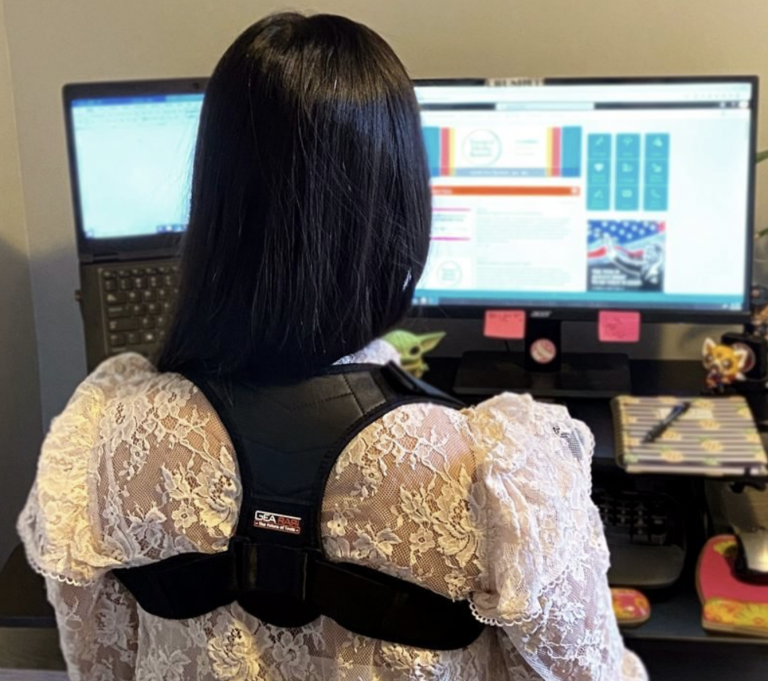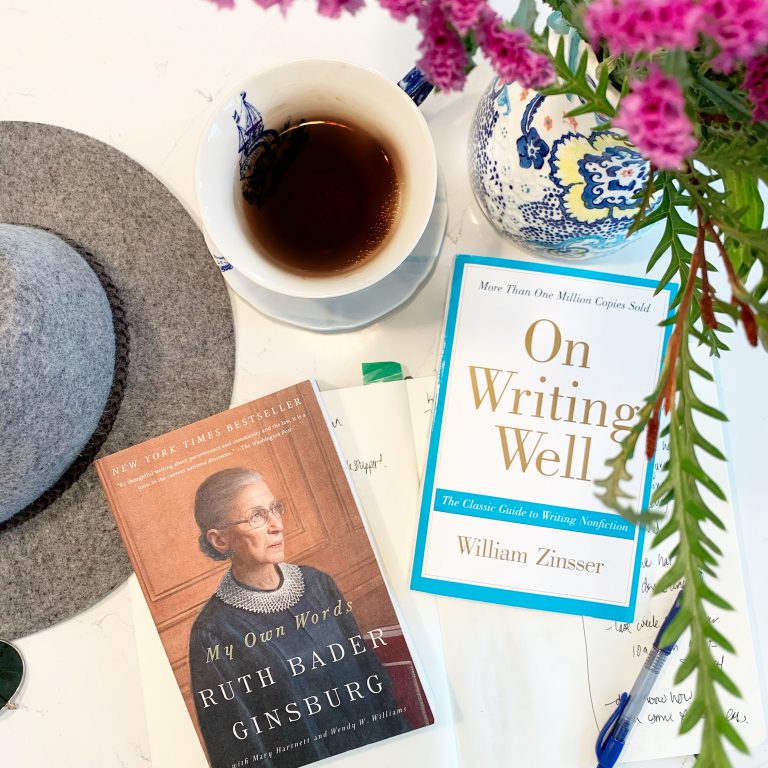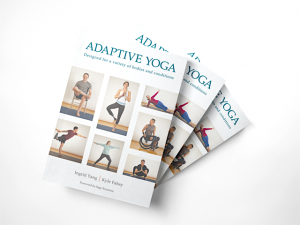Original article was featured in Yoga Journal – view article here.
Arthritis is the most common condition affecting the musculoskeletal system, with the kneeand the hip being the two most commonly affected joints. Approximately 21 percent of adults in the United States live with arthritis, which is characterized by the slow and sometimes progressive loss of cartilage that covers the bones of a joint.
Many people assume medication or joint surgery are the only ways to curb arthritis pain, but increasing evidence shows that targeted exercise and strength training can actually delay or, in certain circumstances, even prevent the need for surgery.
Both the Centers for Disease Control and Prevention (CDC) and the Arthritis Foundation recommend exercise programs for hip and knee arthritis that include flexibility, strengthening, endurance, and balance. Yoga has all four components, making it a perfect tool for reducing arthritis pain and disability.
How Yoga Reduces Arthritis Pain
Practicing yoga strengthens the muscles around an effected joint, stabilizing it and reducing pain. People with hip and knee pain should focus on strengthening a few critical muscle groups: the knee flexors (hamstrings), knee extensors (quadriceps), hip extensors (glutes), and hip abductors (outer thighs).
Another reason strengthening these muscles is important: Say you have arthritis in your knee. The pain will likely cause you to put less weight on the joint and use it less. Over time, that lack of causes weakness in the surrounding muscles, which causes more pain. What’s more, when you use these muscles less, their range of motion is decreased…which causes more pain, which feeds right back into the cycle.
The solution: Adding these six poses—which strengthen the muscles around the hip and knee—to your practice.
Side Plank on Forearm (Vasisthasana)
Hip abductor weakness is common in hip and knee arthritis. When the hip abductors are weak, you might shift your weight over the hip where you feel pain when you walk. That causes the pelvis to tilt downward instead of upward, which increases compressive forces on the inner knee joint. Side Plank is one of the best exercises to strengthen the gluteus medius muscle, which is the primary hip abductor.

Come into a Forearm Plank. Rotate the right forearm so the fingers of the right hand point toward the left hand and your right forearm is at a 45-degree angle to the front edge of the mat. Roll to the outer edge of your right foot, stacking your left foot over the right. Press the hips up and away from the mat, engaging the core and right inner thigh up into the left leg. Lift the left fingertips to the sky and press the right forearm down into the mat as you stack the shoulders. Gaze forward or up to the left hand. Hold for 3 to 5 breath cycles. Repeat on the other side. If this pose is too hard on your shoulders, lower the bottom knee to the mat for more support.
Warrior I (Virabhadrasana I)
In Warrior I, the quadriceps muscles are strengthened by maintaining knee stability as the hip, knee, and ankle of the front leg flex. Warrior I also strengthens the hip extensors of the back leg by controlling the degree of hip extension and abduction because of its role in centering the pelvis over the feet. Warrior I also offers variability because you can control the length of the stance (keep feet closer together for more stability). If this pose hurts your knee, shorten your stance and back off of the deep knee bend of the front leg.

Starting in Downward-Facing Dog Pose, step the left foot forward between the hands so that it is placed next to the left thumb. Spin the right heel down approximately to a 45-degree angle and spin the outer edge of the right foot down so the entire plantar aspect of the foot grounds down. With your left leg bent and thigh parallel to the floor, inhale your arms up to the sky, hands facing each other, fingers pointing up. The back leg remains straight and strong as you anchor the foot to square the hips forward. Lift the lower abdomen up and in as you lengthen the tailbone down. Draw the shoulders down the back, and gaze forward or slightly up between your hands. Hold for 5 breath cycles. To exit, bring the hands down in a swan dive to frame the foot, and return to Downward-Facing Dog. Repeat on the right side.
Extended Side Angle Pose (Utthita Parsvakonasana)
Hamstring strengthening is an important principle in improving muscle strength and decreasing pain in people with hip arthritis. Extended Side Angle places the front hip into abduction and external rotation, allowing for increased activation of the hamstrings. This change in the center of gravity, when compared to Warrior I, minimizes the activation of the hip adductor muscles and offers more potential for strength gains in the posterior leg muscles. Isometrically pull the front knee toward the trunk to activate the hamstrings.

Start in Warrior II Pose, with the left foot forward. Place the left forearm onto the left thigh, or the left hand to the floor or on a block outside your foot. Extend the right arm over the right ear to feel the extension in your right side body. The palm faces down to the ground with the fingers extending out in front of you. Extend both sides of the waist to reach out and over the front thigh. Engage the abdomen to protect the spine and side. Your gaze can extend toward your right hand, to the ground, or straight forward, depending on which is most comfortable for your neck. Hold for 5 breath cycles. To exit the pose, turn the torso to the mat to frame the left foot with your hands, and step back to Downward-Facing Dog Posebefore switching sides.
Bridge Pose (Setu Bandha Sarvangasana)
Bridge is an excellent way to strengthen the hip extensors in a moderate weight-bearing position without overextending the joint. Bridge also strengthens the knee flexors and core and stretches the hip flexor. Hip strength is important in individuals with knee arthritis, because it decreases the workload on the quadriceps and places less force on the knee.

Start by lying on your back with your knees bent, feet flat on the floor, and arms alongside your body with hands facing down. Roll your shoulders underneath you as you begin to lift your hips. Press your feet and shoulders into the mat as you lift your hips. As you rise, walk the feet closer to your buttocks and scoot your shoulders into midline to further elevate the hips and lengthen the tailbone. Keep your knees parallel as you engage the inner thighs. Interlace the fingers on the mat, extend the palms on the floor next to you or hold on to a strap with the hands. Keep your neck neutral by relaxing your chin away from your chest to preserve the natural curve of your cervical spine. Your shoulders, feet, and back of the head support your lift comfortably on the mat because you are using the muscles of your buttocks and back to lengthen your hips. Hold for 5 to 10 breath cycles. To exit the pose, release the hands if interlaced and slowly roll down your spine.
Gate Pose (Parighasana)
Gate activates the hip adductors in the kneeling leg, which keeps the hip in an internally rotated position. To engage the hip adductors, isometrically contract the kneeling leg toward the midline. This pose also strengthens of the hip abductors of the kneeling leg and the knee extensors of the extended leg.

Start in a standing kneel (on your knees and shins, but hips lifted). You can place a folded blanket under the knees for cushioning and comfort. Step your right leg out to the side to straighten the knee, with the right toes pointed forward. Make sure your hips are aligned over the knees. Inhale the arms up to the sky and relax your right hand to draw down your right leg toward the ankle, stretching through the left side of the trunk. Continue pressing the hips forward, so as not to let the buttocks bow out. Feel the stretch on the right inner thigh as you ground through the right foot. Bend farther into the side bend, as much as is comfortable but at the same time challenging. Hold for 5 to 10 breath cycles. To exit the pose, reach both arms back up to the sky and step the right knee next to the left. Switch sides.
Tree Pose (Vrksasana)
Tree pose helps with knee extension mobility, knee extensor strengthening, hip abductor strengthening, and increased core stability. Tree requires significant muscle activation of the knee extensors and knee flexors to keep the knee of the standing leg in neutral extension. It also activates the hip abductors to keep the pelvis level. The lifted leg strengthens the hip flexors and hip external rotators of the bent leg to maintain the same-side hip in line with the pelvis. With the knee flexors bending the knee, it also provides excellent hip opening because it stretches the internal rotators. Hip muscle weakness is quite common in people with hip arthritis, so modifications will likely need to be made initially. Be mindful in Tree: It can place compressive loads on the standing knee while the knee extensors in the straightened knee are strongly contracted.

Start in Mountain Pose (Tadasana), with a firm footing on the ground and your gaze focused on an object in front of you. Shift all of your weight to your left leg and bend your right knee up into your chest, catching hold of the knee with your hands. Hold your right ankle with your right hand and fold the foot into your inner thigh. Press the left thigh back into your right foot so the foot does not overpower the standing leg or cause it to bow out. Reach your arms overhead or keep the hands to prayer at heart center. Lengthen through your tailbone and engage the abdomen as you draw the shoulder blades down the back and open the heart space. Hold for 5 to 10 breath cycles. To exit the pose, step your right foot down and shake it out. Repeat on the opposite side.

Adapted from Adaptive Yoga by Ingrid Yang and Kyle Fahey. Reprinted by permission of Human Kinetics. Copyright © 2021. Buy now.
Ingrid Yang, MD, JD, E-RYT 500, C-IAYT, is a yoga therapist, teacher, and physician. She leads teacher trainings, workshops, and retreats all over the world, seeking to integrate her background in allopathic medicine with the ancient teachings of the centuries-old yoga traditions. Her teaching is seeded deeply in dharmic philosophies and an expert grasp of movement kinesiology.
Kyle Fahey, DPT, PT, is a doctor of physical therapy and senior physical therapist at the Shirley Ryan AbilityLab in Chicago, Illinois, the world’s largest and top-ranked acute rehabilitation hospital. He is the founder and creator of a weekly wheelchair yoga program for the hospital and seamlessly integrates adaptive yoga into his treatments.




